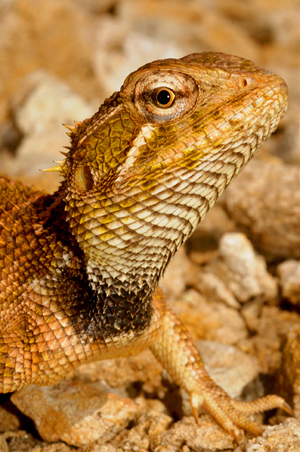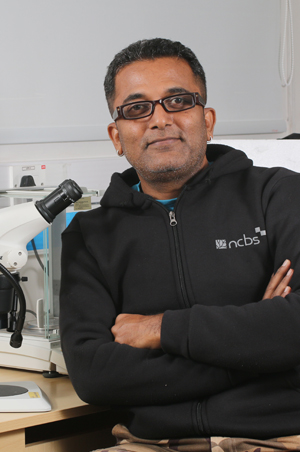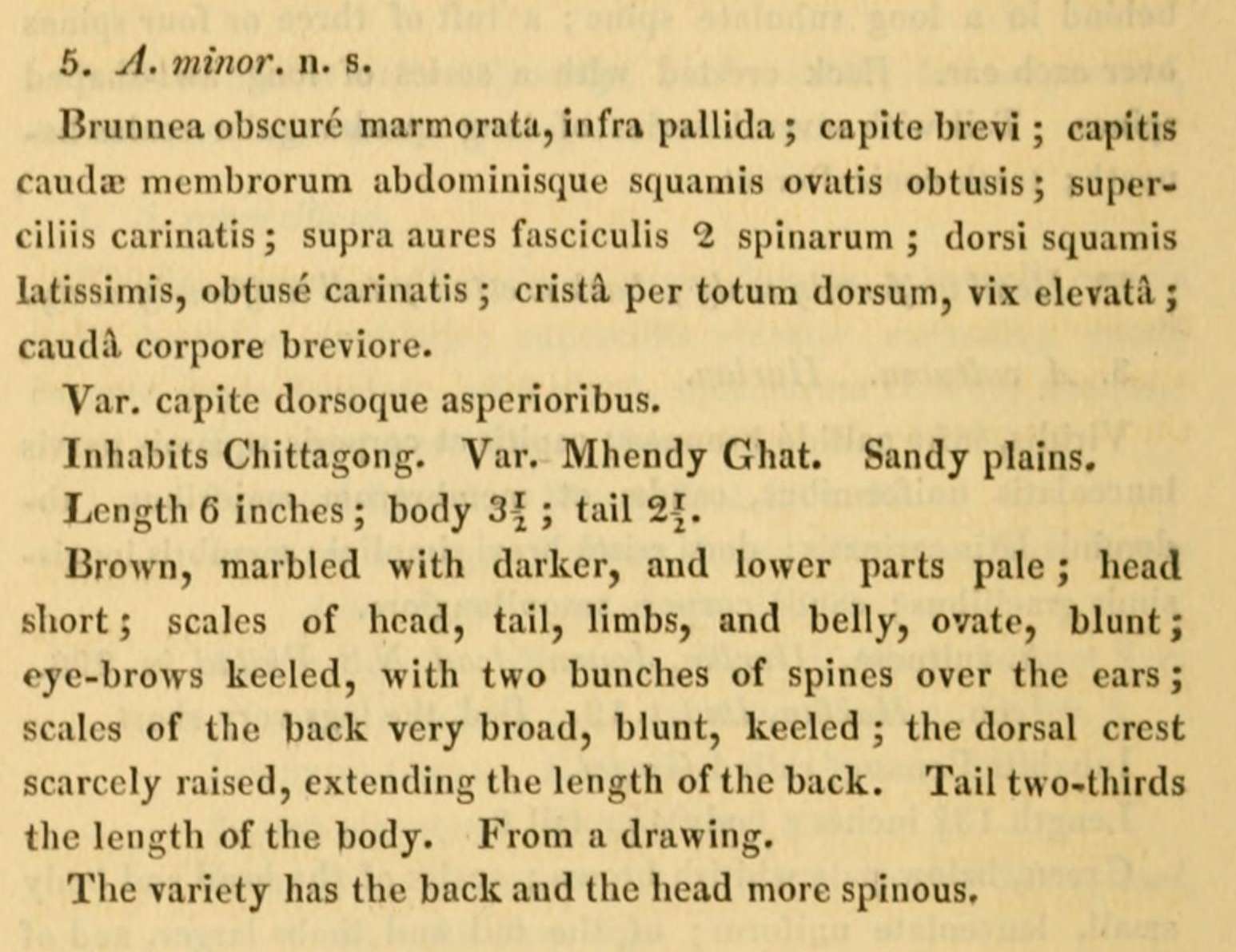Resolving a 180 Year Old Taxonomic Mystery
Hardwicke’s bloodsucker is an agamid lizard found in western and central India. It is a small, stocky, and pot-bellied lizard with a short tail that is currently recognized under the scientific name Brachysaura minor. This species, however, has a rather convoluted taxonomic history.
The first scientific description of the species comes from Hardwicke and Gray in 1827 and is based on a color sketch by Hardwicke which now resides in the Archives of the Natural History Museum, London. They named the species Agama minor. Later, in 1856, Blyth provided a new name and description for what was likely the same species, calling it Brachysaura ornata. He did not refer to Hardwicke and Gray’s previous description. Over the years, the description, name and placement of the species was questioned by many, and it has subsequently been placed in the additional genera Charasia and Laudakia as well.
In 1999, Manthey and Schuster placed the species back within the genus Brachysaura, and it has since be most commonly referred to as Brachysaura minor – the only species within the Brachysaura genus.
 |
| Close up of Calotes minor, a species with a confusing taxonomic history. Photo credit: Varad Giri. |
A recent study has called this placement into question. Using molecular and morphological data, V. Deepak, Raju Vyas, Varad B. Giri, and K. Praveen Karanth analyzed the identity and systematic position of Brachysaura minor. Their results, published in the paper “A Taxonomic Mystery for More than 180 Years: The Identity and Systematic Position of Brachysaura minor (Hardwicke and Gray, 1827)” (Vertebrate Zoology. 65(3): 371-381), suggest that Brachysaura is actually nested within the genus Calotes, and that the species should henceforth be referred as Calotes minor. They also note that one of the previous primary impediments to placing this species within the Calotes genus is the fact that, compared to other members of the genus, this species has a very short tail. However, the researchers note that, unlike other members of this genus, this species is ground-dwelling, and in other ground-dwelling agamids, reduced tail length is a common characteristic. Thus, the authors propose that the length of the tail is an adaptation related to the species’ habitat and not a justification for placement in a new genus. Not only does the paper propose a new placement for Brachysaura minor, but by re-evaluating other specimens that were previously believed to be representatives of this species, the authors also suggest that members of Agaminae are limited to a distribution in arid regions of Western India.
 |
| Dr. Varad Giri. Photo credit: Zeeshan Mirza. |
According to co-author Dr. Varad B. Giri, a Post Doctoral Fellow at the National Centre for Biological Sciences in Bangalore, India, this paper would not have been possible without the Biodiversity Heritage Library.
Varad has been studying the taxonomy of Indian reptiles and amphibians since 2000. While exploring records in the Reptile Database, he discovered links to literature in BHL and was introduced to our open access digital library. The discovery had profound effects on his work.
“For a taxonomist like me, BHL is an amazing resource. One of the vital things of taxonomy is to understand the morphological characters of known species. With this knowledge, one can do a proper diagnosis of the species known or hitherto unknown to science. One way to do this is by referring to the type specimens, but most of the types of Indian amphibians and reptiles are in museums abroad and thus are difficult to access. The other way is to refer to the original descriptions, which were again inaccessible as they were published in old journals. BHL has made this latter thing possible by putting all of the historical literature online where one can access it with ease. I strongly feel that if BHL would not have been available, I would not have performed good taxonomic work with such ease due to a lack of historical literature. BHL has a big positive impact on my research.”
When he is working on a paper, Varad uses BHL several times a day. He usually downloads relevant papers using BHL’s custom PDF service, which allows him to select precisely the pages he wishes to save. This feature is one of his favorites on BHL. When appropriate, Varad will also download entire books as PDFs and, having now been exposed to the many illustrations available from BHL through his interaction with BHL staff, he also plans to download relevant images in the future.
While the ability to perform full-text search is a feature that Varad would like to see added to BHL, he notes that BHL’s general search is quite effective and has in fact exposed him to many relevant items that he was previously unaware of.
While BHL’s many value-add features make Varad’s experience with our library all the more positive, the most important thing that BHL provides him with is access to the literature that he needs to conduct his research. Research like the taxonomic placement of Brachysaura minor (or should we say Calotes minor?).
The original description of Calotes minor. This paper was downloaded using BHL! The Zoological Journal. v. 3 (1827-1828). http://biodiversitylibrary.org/page/27485744. Digitized by Smithsonian Libraries.
“BHL is doing a wonderful service for researchers like me, who work with limited resources in developing countries like India. For our recent paper dealing with a 180 year old taxonomic mystery, we needed to refer to many historical articles. Without the help of BHL, this would have taken more time or been very difficult. There are many such publications pertaining to Indian amphibians and reptiles where we will need BHL!”
We are certainly thrilled to hear about the lasting and ongoing impact that BHL will have on Varad’s research and his investigation into taxonomic mysteries. For, after all, as Varad told us, “To properly solve the mystery, one has to clearly understand the history.” We couldn’t have said it better ourselves!
Do you use BHL to support your work? Want to be featured on our blog? Write us at biodiversitylibrary@gmail.com!





Leave a Comment